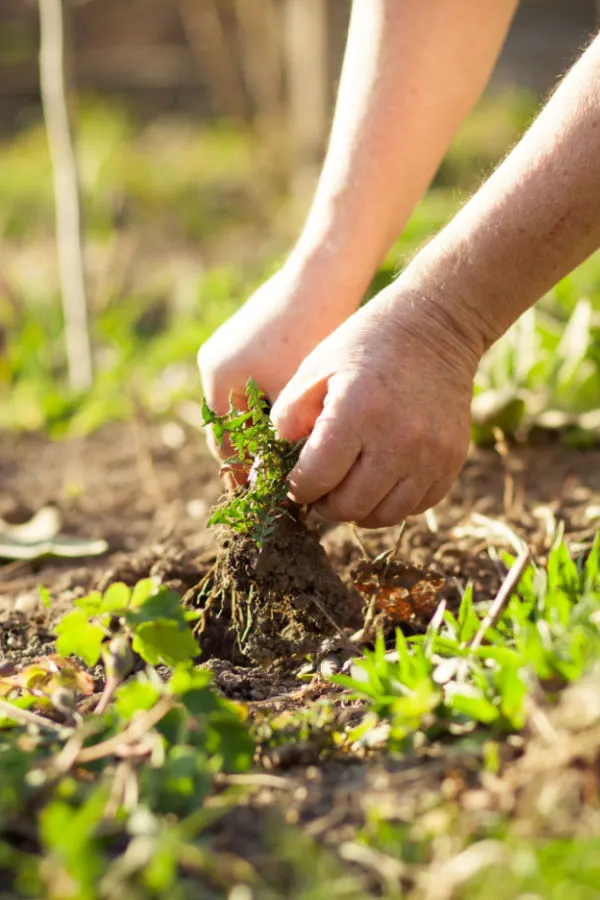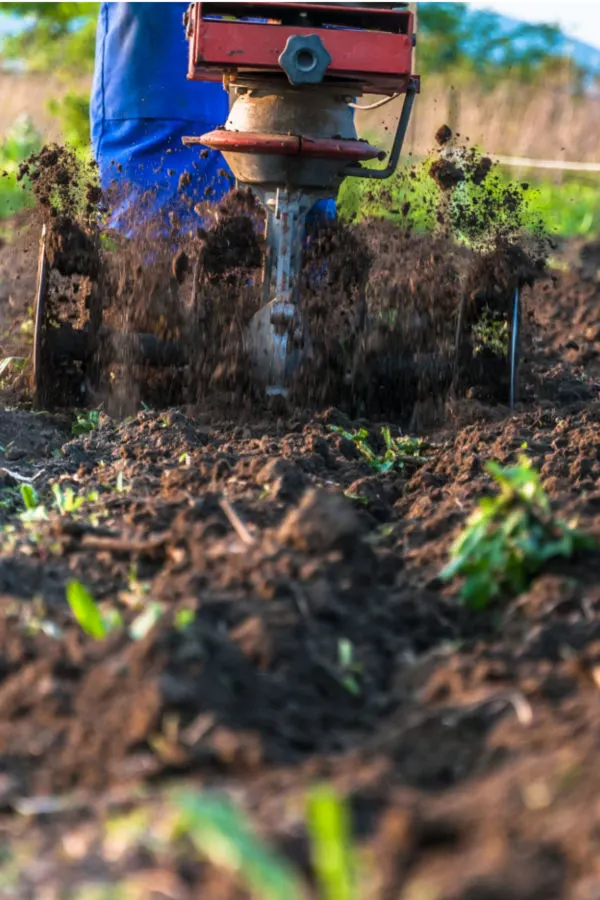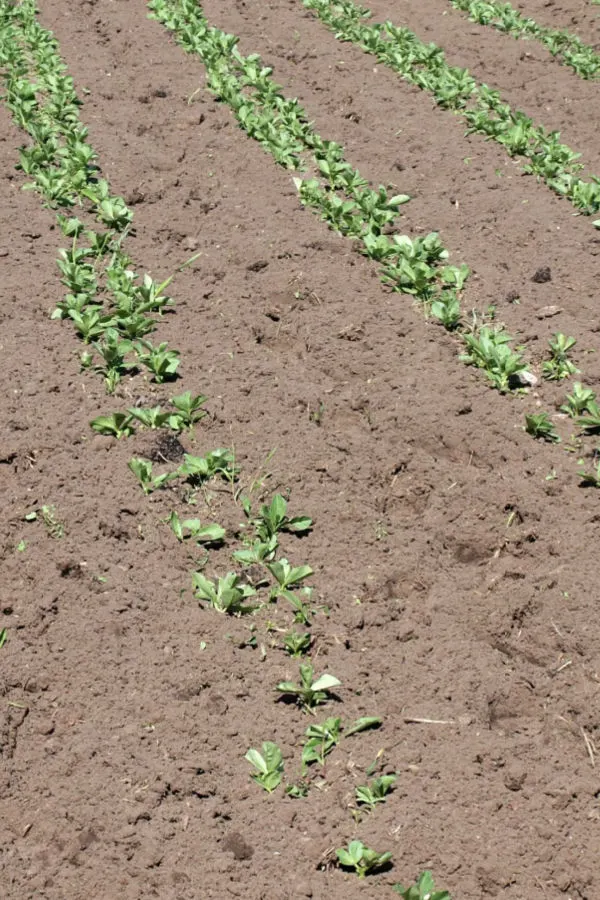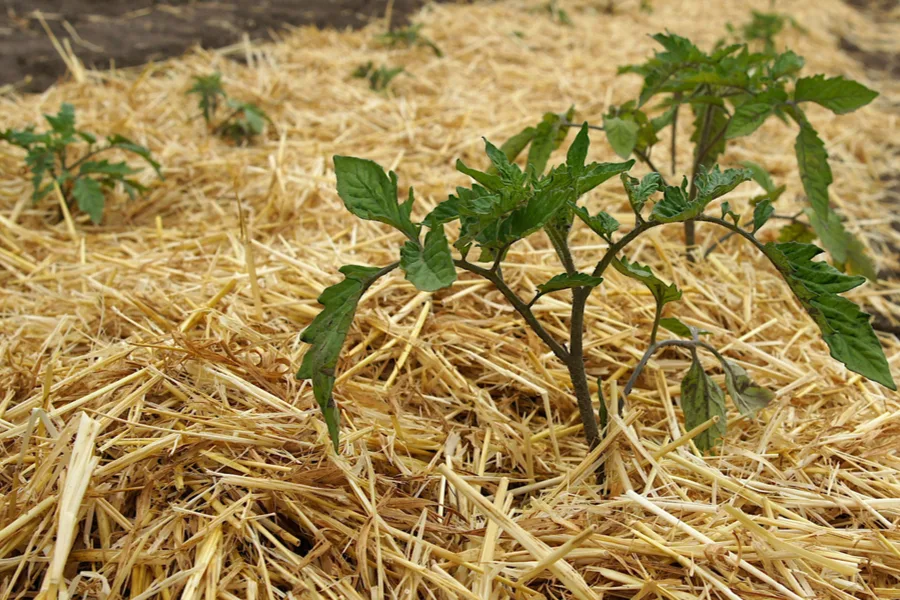Looking for a couple of simple secrets to stop the endless onslaught of weeds in your garden this spring, summer and fall – without having to spend all of your time constantly weeding? The answer is actually simple and just might surprise you – start working in your soil less!
Sound crazy? Well, believe it or not, working less in the soil in your garden is exactly the formula for putting an end to weeds in your garden. And for good!
The simple fact of the matter is most gardeners actually cause the biggest portion of weeds and weed issues in their garden. Usually by performing a few often demanding chores they think will help make the problem go away – only to make it worse in the process!

Let’s face it, weeds can turn a gorgeous garden into an eyesore in just a few weeks. Not only do they create an untidy appearance, they also choke the life out of your plants.
The Real Issue With Weeds
Weeds compete for the same vital resources that your vegetable plants need. And when they begin to grow in the same space together, it takes a toll on the health of your plants. When weeds take over, there is less moisture and food in the soil. And less oxygen too. Unfortunately, the more weeds that sprout up, the more resources the weeds consume- and the more likely your crops will suffer.
For all of the above reasons and more, it’s easy to see why gardeners worry about weeds. And why they work so hard tilling, hoeing, weeding and re-weeding all season long to stop them. That is, until it finally overwhelms them!
But surprisingly, as you’ll see below, those labor-intense chores above are really the root cause of the problem. And by simply not working so hard, and changing how you plant and care for your garden space, you can eliminate weeds with ease. Without a lot of work, expense, or frustration.
2 Simple Secrets To Stop Weeds In Your Garden For Good
1 – Stop Tilling & Digging
The number one most effective weed planting machine in the world is the rototiller. Especially when one is used to get the soil ready for planting, and then again and again throughout the garden season to keep tilling the weeds that continue to come up.

When a garden is first tilled under in the spring, that is the real date of a first planting. And that first crop is weeds – and a lot of them! As in all of the weed seeds that have been lying dormant on top of the soil that have now been tilled under and planted by the tines of the rototiller.
On top of the soil, weed seeds have a far less chance of sprouting. But as soon as they are turned under, they are in the soil and now ready to grow. And the cycle never stop, it only multiplies.
The weed seeds that were turned under sprout. In a few days or a week, they begin to take over. A rototiller (or a rake or hoe) is run through again and replants the weeds and even more seeds that may have found their way on top of the soil. And now, in a few days or a week, there are even more!
Tilling Is Hard Work – 2 Simple Secrets To Stop Weeds In Your Garden For Good!
It becomes a never-ending cycle of tilling and re-tilling. Or hoeing and re-hoeing. And, it’s a battle you simply can’t win. The answer is simple – stop tilling and digging. In fact, the number one rule to start eliminating weeds is to stop tilling and digging repeatedly in your garden space. Tilling, raking, digging and hoeing all replant weed seeds – and they are physically hard on your back, legs and arms as well!

It not only takes a toll on the body, it can take up a lot of your time. It can also be expensive when you think of the equipment and the fuel it takes to run a rototiller. But even worse, tilling is also hard on your soil, and repeated tilling can lead to far less healthy soil.
How Tilling Hurts The Soil
For starters, constant tilling destroys much of the soil’s structure. Not just earthworms and the organisms that keep it healthy, but it also rips up all of the channels and paths that exist under the soil that help deliver moisture and nutrients to plants.
Plain and simple – the less you disturb your soil, the healthier your soil will be. But even more importantly, the less weeds you will have now and in the future! See: How To Create A No Till Raised Row Garden – Garden Easy!
#2) Mulch, Mulch & Mulch Even More – 2 Simple Secrets To Stop Weeds In Your Garden For Good!
So if you shouldn’t till, what should you do? The answer is once again, work less – by mulching your garden heavy, and letting the mulch do the work for you. Not an inch or two of mulch, but a thick coat of mulch!
Bare soil equals weeds – and a lot of them. Keeping a weed free garden begins with keeping weed seeds from ever finding a permanent home in the soil where they can germinate. Once you eliminate the rototiller, you at least stop the act of planting seeds under the surface of the soil.
Listen In Below To Our Podcast On Stopping Garden Weeds Below!
Unfortunately, if the ground is still bare on top of the soil, many seeds can still push down easily into the top 1/16th of the dirt to sprout. But not if there is mulch there to stop them!
Bare soil allows blowing and drifting weed seeds to find a home. But when you use mulch to protect the soil, you keep those future weed seeds from ever becoming established. A thick layer of mulch also suppresses existing weeds and weed seeds already in the soil.
Finally, it also helps insulate and protect the vegetable plants that grow in the space too. A properly mulched garden is a healthy garden that has to be watered and weeded far less.
How Much Mulch Does It Take – 2 Simple Secrets To Stop Weeds In Your Garden For Good!
For effective weed control, mulch needs to be at least four to six inches thick. In the walking rows where plants never grow, you can use hardwood bark mulch, whole leaves or even straw or grass clippings.
Around plants, you want to use organic mulch that can allow water and nutrients to easily pass through to plants. Even more, as it breaks down, it can help build even more strength in the soil. The best choices around plants are compost, straw, grass clippings and shredded leaves. Whole leaves are not good up around plants as they can form together and keep moisture out.

Finally, never let that soil see open light again. When you pull your plants out in the fall, either mulch it back over – or even better, plant a no-till cover crop. No-till cover crops like annual rye or oats fill the soil over and keep it protected from weeds and weed seeds.
The Power Of No-Till Cover Crops
In the spring, you simply mow off the crop a few times and you can plant right through it. No need for tilling – and no need for ever having to work hard against weeds again!
This “total” covering of bare soil all but eliminates weeds from ever establishing and makes maintaining the space simple. Here is to ending the cycle of weeds in your garden by working less this year – and finally having more time to enjoy all of that extra produce your healthy soil will bring you!
For even more on controlling weeds, check out our podcast on the subject here : How To Control Garden Weeds With Ease!
Follow Our Facebook Page For Even More Great Tips! Simple Garden Life Facebook Page
Simple Garden Life is a website dedicated to keeping gardening fun, simple and enjoyable! We publish two new articles each week along with a new garden podcast episode every two weeks. This article may contain affiliate links.
